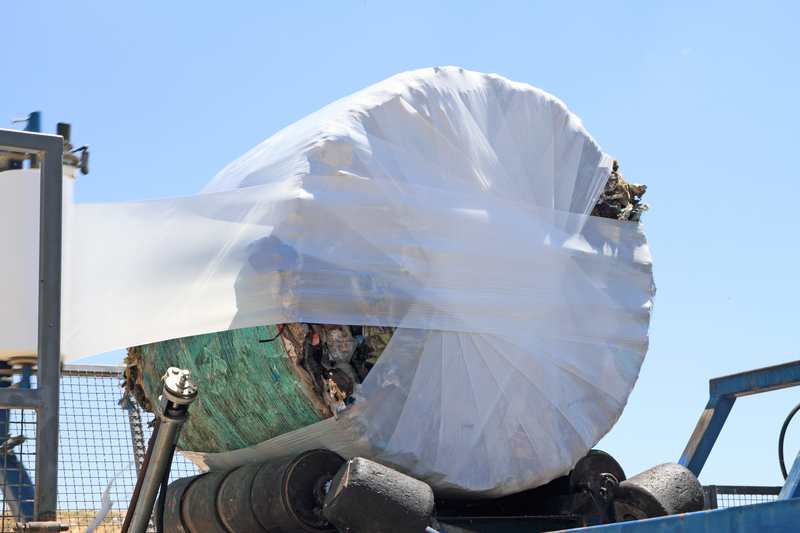Historical Highlights: How Different Societies Managed Waste
Posted on 15/10/2025
Waste management may seem like a modern concern, but civilizations have grappled with refuse and sanitation for thousands of years. The way different societies dealt with waste tells a story of technological advancement, urban planning, public health, and human ingenuity. This article explores the significant historical highlights of how various cultures and societies managed their garbage, emphasizing milestones that shaped modern approaches to refuse disposal and environmental protection. Dive into this comprehensive journey and discover the ingenious, odd, and forward-thinking methods societies used to keep their habitats clean.
The Beginnings of Waste Management in Ancient Societies
Early Methods in Prehistoric and Primitive Societies
Our earliest ancestors generated little to no waste compared to modern times. Hunter-gatherer bands practiced a mostly zero-waste lifestyle by consuming natural materials and reusing or repurposing items. Their main refuse--mostly bones and organic matter--was biodegradable. As these populations were nomadic, waste rarely accumulated in one place.
- Organic waste would decompose naturally.
- Tool and clothing materials were frequently reused.
- Nomadic movement dispersed refuse across large areas.
Mesopotamia and Early Urbanization
The shift to settled life in the **Fertile Crescent** brought a new set of challenges. Archaeological digs in ancient cities like Ur and Babylon have revealed how refuse disposal evolved:
- Residences often had small pits in yards for refuse.
- Early attempts at designated dumping grounds outside city walls.
- Sumerians devised clay pipe drainage systems for liquid waste.

Sanitation and Waste in the Classical Civilizations
Egypt: From Sand Pits to Purposeful Dumps
Ancient Egyptians were pioneers in organized waste management. The dry climate preserved much refuse, allowing archaeologists to study their practices in detail.
- Households stored garbage in containers and pits sealed with clay to keep pests at bay.
- Dedicated waste workers (servants and laborers) were tasked with removing trash and maintaining cleanliness in temples and public spaces.
- Large city outskirts became established dump sites, an early version of municipal landfills.
Greece and the Public Health Revolution
The Greeks spearheaded many innovations in urban life, including advancements in waste disposal:
- Residences had cesspits for night soil (human waste).
- Athens issued one of the first known municipal ordinances (around 500 BCE) requiring household refuse to be disposed of at least a mile from city walls.
- Public bathhouses and latrines were an early form of shared sanitation infrastructure.
The ancient Greek approach set the foundation for balancing public health and urban cleanliness, a philosophy echoed in later societies.
Rome: Masters of Engineering and Sanitation
The Romans are often celebrated for their engineering prowess, and waste management was no exception. Their complex network of aqueducts, drains, and sewers laid a critical foundation for modern sanitation.
- The Cloaca Maxima, constructed in the 6th century BCE, is one of the world's earliest and most extensive sewage systems. It channeled wastewater and refuse away from the city towards the River Tiber.
- Public latrines were commonplace, often built of marble with running water for cleaning.
- Street cleaners (the scoparii) collected and removed garbage from marketplaces and congested streets.
Fun Fact: Romans recycled much of their waste -- broken ceramics were used as road fill, while organic material was composted in farmland outside the city limits.
Medieval Waste Management: Decline and Recovery
Urban Filth in Medieval Europe
With the fall of the Roman Empire, urban infrastructure decayed across much of Europe during the early Middle Ages. Sewers collapsed, and waste was often left to accumulate in city streets and alleys. This neglect had devastating effects on public health and urban living standards:
- Residents commonly threw waste from windows into open gutters, leading to filthy streets.
- Pest infestations (especially rats) became rampant, exacerbating the spread of disease.
- The Black Death (14th century) was partly exacerbated by poor sanitation conditions.
Islamic Golden Age: Advanced Urban Planning
In contrast, cities within the Islamic world--including Baghdad, Cordoba, and Cairo--flourished during the medieval period with systematic waste management and advanced city planning:
- Dedicated street cleaners (known as zabbaleen) collected waste daily.
- Cities featured public bathhouses, covered drains, and laws regulating waste disposal.
- Markets enforced strict cleanliness standards, with refuse regularly cleared.
The Arabic world's emphasis on hygiene and cleanliness had a lasting influence on waste management in Europe and beyond.
Early Modern Adaptations: Regulations and Innovation
Renaissance Europe: From Chaos to Order
The Renaissance sparked renewed interest in science and public health, and with it, steps were taken towards more organized and regulated waste management:
- Some towns initiated waste collection services, using carts to remove refuse from streets.
- Increasing urbanization led to the first attempts at municipal sewage and garbage disposal.
- Authorities established rules prohibiting dumping waste near homes and wells.
Interesting Point: During the 17th and 18th centuries, Paris began using early versions of "scavenger carts" and "ragpickers" (chiffonniers) who sorted and recycled discarded materials.
Ming and Qing China: Organized Systems and Night Soil Economy
Chinese cities such as Beijing and Nanjing were renowned for their intricate systems of waste management.
- Municipal workers collected night soil (human waste) to sell as fertilizer, forming a valuable rural-urban nutrient cycle.
- Refuse collectors sorted and disposed of garbage, often recycling metals, paper, and organic materials.
- Punishments were enacted for illegal dumping, especially near public infrastructure and water sources.
The Industrial Age: Waste Becomes a Global Challenge
19th Century Europe: The Sanitary Awakening
The arrival of the Industrial Revolution brought massive urban growth and unprecedented amounts of waste. For the first time, garbage became a pressing issue threatening public health on a massive scale. This period saw:
- Establishment of modern municipal sanitation departments in cities like London and Paris.
- Construction of large-scale sewer systems (notably London's system engineered by Joseph Bazalgette).
- Creation of organized landfill sites and regulated waste collection schedules.
- Legislation like Britain's 1848 Public Health Act, mandating local governments to handle urban refuse.
Noteworthy Highlight: The "dust-yard" system in Victorian Britain--where household ashes and cinders were collected for reuse in brick-making and land reclamation--paved the way for fly-ash recycling.
America: Innovating Waste Collection and Disposal
As cities such as New York, Boston, and Chicago grew rapidly, American inventors and policymakers devised creative waste solutions:
- First national waste collection service started in New York City (1895).
- Introduction of the garbage incinerator, pioneering waste-to-energy technology.
- The trash can (patented in 1884) became a household staple.
By the turn of the 20th century, efficient garbage collection had become a hallmark of modern, prosperous urban life.

Twentieth Century to Present: Innovations and Sustainability
Post-War Developments: The Age of Plastics and Modern Landfills
After World War II, consumerism skyrocketed and plastics transformed waste streams. Modern societies confronted new challenges as single-use products multiplied:
- Landfills became the main method for waste disposal, with
lined sites engineered to prevent leachate contamination. - Incineration plants adopted to deal with mounting urban waste, though pollution concerns persisted.
- Introduction and expansion of public recycling programs for paper, bottles, cans, and plastics.
Public education around litter and pollution grew, with iconic campaigns such as "Keep America Beautiful" cementing anti-litter social norms.
Global Approaches: Comparing Modern Waste Management Systems
Today, different countries and regions employ various methods to tackle waste, reflecting their unique cultures, economies, and environmental priorities:
- Japan--Famed for meticulous sorting, recycling, and clean streets, with zero-waste towns like Kamikatsu leading the world.
- Sweden--Incinerates nearly half its household garbage for energy, reducing landfill dependency to almost zero.
- Developing Nations--Often rely on informal waste pickers for recycling, with limited infrastructure for collection or disposal.
The Path to a Sustainable Future: Lessons from History
Examining historical highlights of how societies managed waste shows that successful approaches blend innovation, regulation, and community engagement. As we confront today's sustainability challenges, essential takeaways include:
- Investing in infrastructure--from Roman sewers to modern incinerators--remains crucial for public health.
- Recycling and resource recovery are not new; repurposing materials has deep roots in many cultures.
- Public education and clear regulations support compliance and innovation.
- Future challenges--plastics pollution, e-waste, and hazardous materials--call for creative, global cooperation.
Historical highlights in waste management inspire us to push forward with smarter, greener solutions. By blending ancient wisdom with modern technology, societies can create healthier, more sustainable urban environments for generations to come.
Conclusion: Appreciating the Past and Innovating for the Future
From prehistoric foragers scattering organic scraps to advanced societies adopting intricate recycling programs, the story of waste management is rich, complex, and ongoing. Each era's approach reveals much about its values, priorities, and level of technological advancement. By learning from the historical highlights of global waste management, we can build robust, resilient, and eco-friendly systems that honor both people and planet. Let's carry these lessons forward as we strive for a cleaner, more sustainable world.



